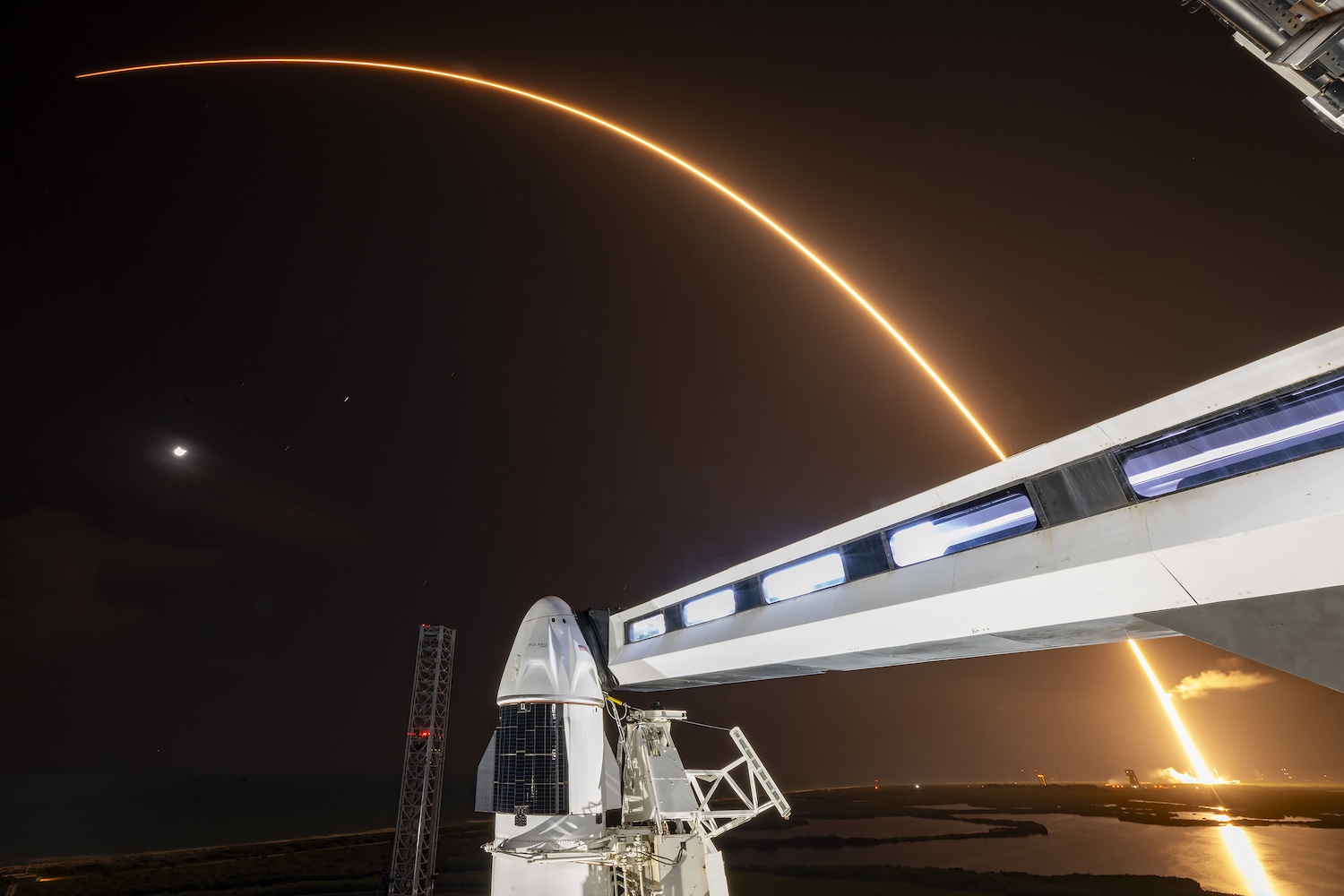Approximately 80% of the Starlink satellites launched last week are at risk of plunging back through the atmosphere or have already done so, according to SpaceX. The company says a geomagnetic storm prevented the satellites from rising up to their operational orbits.
This batch of Starlink satellites took off from Kennedy Space Center on Thursday, February 3 atop a Falcon 9 rocket. All 49 satellites reached their intended preliminary orbits some 130 miles (210 km) above the surface and each achieved controlled flight. The satellites then attempted to rise toward their operational altitude of 340 miles (550 km), but the universe had other plans.
“Unfortunately, the satellites deployed on Thursday were significantly impacted by a geomagnetic storm on Friday [February 4],” SpaceX said in a mission update posted on February 8. “These storms cause the atmosphere to warm and atmospheric density at our low deployment altitudes to increase.” The reason for the initial low orbit is that, should a newly launched Starlink satellite not work, the malfunctioning unit can be easily deorbited by atmospheric drag.
The geomagnetic storm had a profound effect on this batch, as upwards of 40 satellites “will reenter or already have reentered the Earth’s atmosphere,” SpaceX said, adding that “deorbiting satellites pose zero collision risk with other satellites and by design demise upon atmospheric reentry—meaning no orbital debris is created and no satellite parts hit the ground.”
Each Starlink satellite weighs approximately 573 pounds (260 kg). To date, SpaceX has launched over 2,000 Starlink satellites to low Earth orbit, forming an interconnected network that provides broadband internet to paying customers on the surface.
Geomagnetic storms happen as the result of interactions between solar wind (streams of charged particles) and Earth’s magnetic field. The Sun’s coronal mass ejection (CME) from January 29 is likely responsible for this geomagnetic storm.
SpaceX says the “speed and severity of the storm caused atmospheric drag to increase up to 50 percent higher than during previous launches.” Controllers placed the satellites into safe mode, resulting in an orientation that reduces drag, or, as SpaceX put it, helps the sats “take cover from the storm.” The Elon Musk-led company is now working with the U.S. Space Force’s 18th Space Control Squadron and LeoLabs who, with their ground-based radars, are providing SpaceX with regular updates on the status of their wayward satellites.
40 Starlink satellites taken out by a minor geomagnetic event. This is only a foreshadowing of what will come this solar max and why we urgently need to invest in solutions now. https://t.co/jwm4Whvc5U
— Astroplane (@AstroplaneHQ) February 9, 2022
Troublingly, more cases like this could appear in the future as the Sun enters into a more active phase of its 11-year cycle. Sure, SpaceX, with its intense launch schedule, is particularly susceptible, but the increasing pace at which satellites are launched means other satellite operators also need to be on alert. Launches are often scrubbed on account of inclement weather, but it would make sense to also scrub launches on account of unfavorable space weather.
SpaceX said this “unique situation demonstrates the great lengths the Starlink team has gone to ensure the system is on the leading edge of on-orbit debris mitigation.” That claim is bit rich, given that the company currently has FCC permission to fly a total of 12,000 Starlink satellites and is currently seeking permission to launch another 30,000 on top of that. The volume and position of these satellites are already affecting astronomical observations and adding to the growing volume of objects in space, heightening the risk of collisions and adding to a dangerous process known as Kessler Syndrome, which could make Earth orbit inaccessible for years.
More: Astronomers Rally to Stop Starlink and Other Satellite Constellations From Ruining the Sky.













